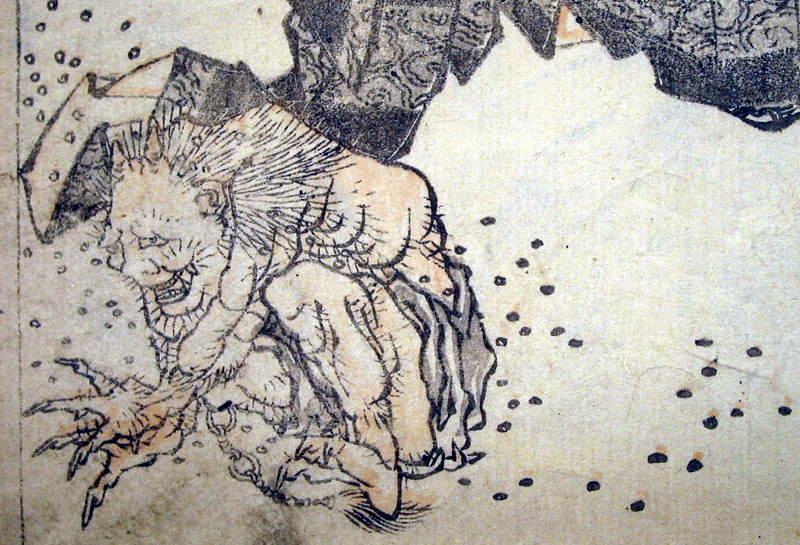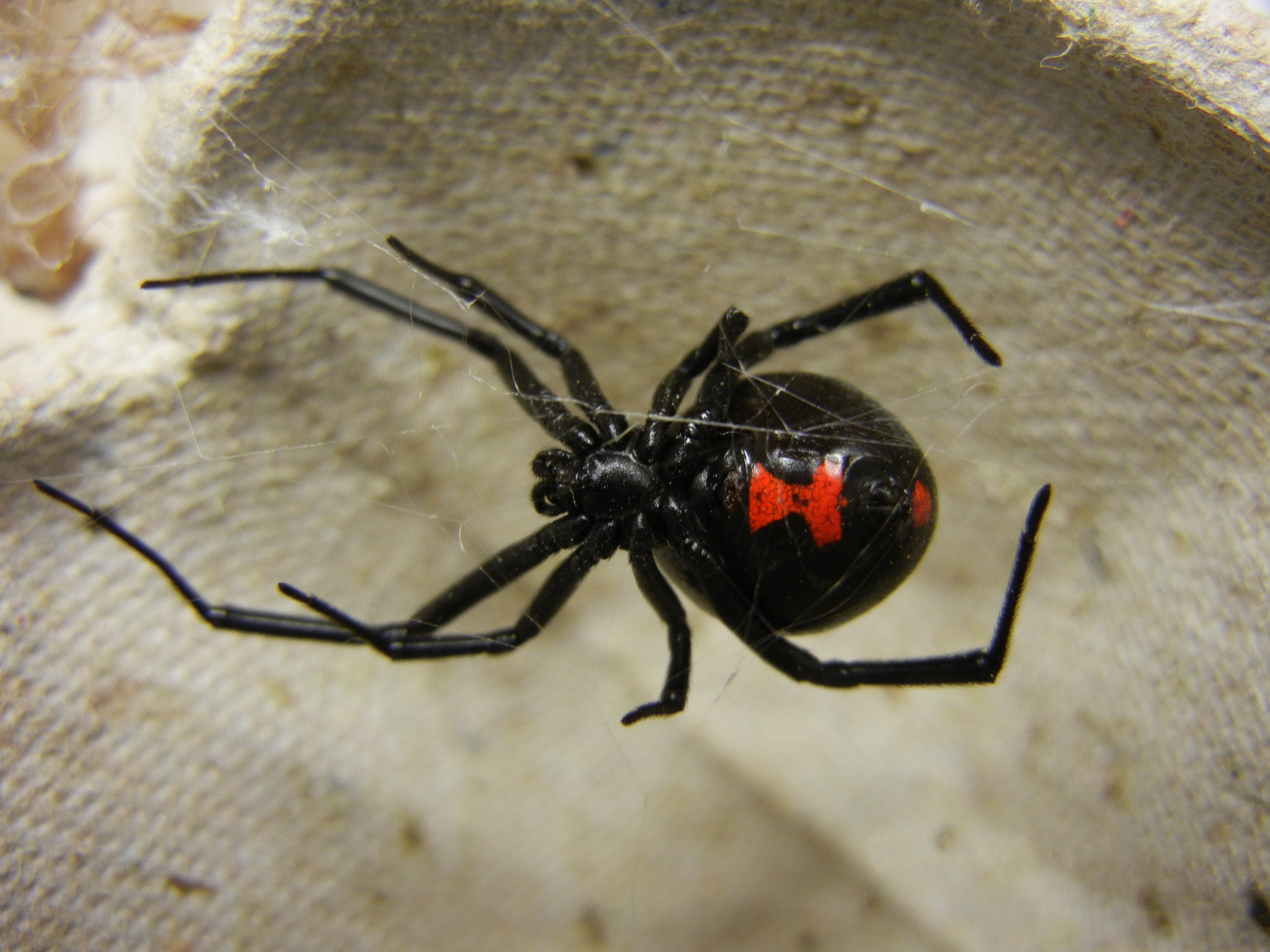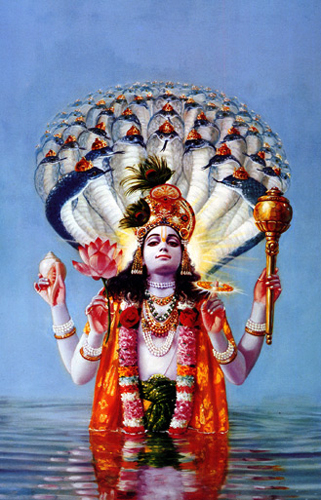Sunlight broke through spotty clouds one afternoon in Prayag, citizens taking the opportunity to relish in the natural shade from harsh rays and relax in the green expanses and flowing rivers and lakes.
On this day, underneath a large, twisted tree, two friends sit - accomplices in a war scaling massively in lands fought across and in the battles themselves.
The first appeared clothed as royalty, though closer inspection revealed the materials were fashioned from tree bark. His skin seemed otherworldly with its blue hue, but his face radiated years of experience.
The second was undoubtedly dressed in the garb of human royalty, but his form begged to differ; his his tusked face and rugged form appeared not unlike a wild animal, yet he conducted himself with the rites and routines of man.
"A fine spot, Rama," the beastly man said. "Even more so with such fierce sun. How did you happen upon it?"
"One of many sights from my exile, Vibhishana," Rama responded. "The locale was so lovely we had to stop for a spell; Lakshmana, myself, and...Sita..."
Vibhishana frowned. Rama's wife always proved a touchy subject. Forced into exile by a world doubting her purity and faithfulness to her husband under grounds of housing with the demonic king Ravana - also Vibhishana's brother - and returned to the earth to prove contrary, any mention of her sent the valiant hero into self-deprecation and sorrow.
Frankly, it troubled Vibhishana; for his friend's health and the people around him.
Sunlight broke through spotty clouds one afternoon in Prayag, citizens taking the opportunity to relish in the natural shade from harsh rays and relax in the green expanses and flowing rivers and lakes.
On this day, underneath a large, twisted tree, two friends sit - accomplices in a war scaling massively in lands fought across and in the battles themselves.
The first appeared clothed as royalty, though closer inspection revealed the materials were fashioned from tree bark. His skin seemed otherworldly with its blue hue, but his face radiated years of experience.
The second was undoubtedly dressed in the garb of human royalty, but his form begged to differ; his his tusked face and rugged form appeared not unlike a wild animal, yet he conducted himself with the rites and routines of man.
"A fine spot, Rama," the beastly man said. "Even more so with such fierce sun. How did you happen upon it?"
"One of many sights from my exile, Vibhishana," Rama responded. "The locale was so lovely we had to stop for a spell; Lakshmana, myself, and...Sita..."
Vibhishana frowned. Rama's wife always proved a touchy subject. Forced into exile by a world doubting her purity and faithfulness to her husband under grounds of housing with the demonic king Ravana - also Vibhishana's brother - and returned to the earth to prove contrary, any mention of her sent the valiant hero into self-deprecation and sorrow.
Frankly, it troubled Vibhishana; for his friend's health and the people around him.
"I see..." Vibhishana did not want to press too far, however, Rama soon spoke up.
"Vibhishana? Was I...just...in my actions?"
"What mean you, friend?" Vibhishana asked, confused.
"Exile, the war, all of it; I drew so many lives into it, the lives of my brothers and wife even!"
"Rama, you let anxiety cloud your rationale," Vibhishana muttered gently. "All childhood years in pilgrimage with Lakshmana fostered no kind of loyalty? And Bharata, who lay a token of sandals for years on end, anticipating your right to lead alongside Satrughna; does that show no trust and love?
"Your brothers would follow you to hell, and one could say they did just that."
Rama remained silent until...
"And...Sita?"
Vibhishana sighed, "I cannot say for certain her motive, I can confirm for certain that her words left an impact on your people."
"Impact...?"
"Indeed. When she cast herself back to Mother Earth to prove her purity of heart, remember the faces of Kosala's populace you spoke of?
"Tears and pity adorned every one of them. If an entire city can weep at one woman's words, I see much potential to learn from mistakes and create a better world, so that Sita's fate dare not repeat. Of course, we cannot know for certain her motive, but considering her faith to you and purity, I find it wise to at least honor her wish instead of drowning in the sorrows of maybe."
Rama appeared more composed by his friend's words, though still in thought.
"I still feel I could have done more, though."
"Yet success lies ahead of you, Rama. Unlike myself."
Rama cocked his brow at this. "Why say that, Vibhishana?"
The sagely beast's eyes turned downcast, much like the sky.
"You possess courage, strength, years of experience, and the loyalty of your family to carry Kosala effectively.
"What of me, though? A mere adviser under my brother Ravana's rule who betrayed his family and kingdom?"
"But you were just in doing so," Rama countered. "You knew the risk to your kingdom's safety at the time, and let it guide you during war."
"And what of after?" Vibhishana said. "My brothers are dead, my sister Surpanakha remains bitter over Ravana's death, and many Rakshasas still hold on to their vicious inclinations!"
Rama replied slowly.
"True, your family may not help, but you do not fight alone. You wish to guide the Rakshasas on a path of man's virtue and purpose? Then you will have man's help from me and my brothers. Hanuman and his monkey brethren can also help, even if we must disturb their lazy routines."
"But...surely we can not expect to convince every Rakshasas..."
"Maybe, but I recall something Bharata once told me: when my exile was instated on request from his mother, he said he would have killed her, but he felt doing so would leave himself without my trust and love.
"True, living beings possess violent tendencies, but not mediating them would bring more chaos than never trying."
Rama places a hand on Vibhishana's shoulder and looks him dead in the eyes with a confident smile.
"And ever since childhood, you meditated in penance to keep your mind affixed to Brahma so that yo could maintain that mediation. If one Rakshasas can do that, then it stands to reason you won't be the last."
The two remained silent under the dwindling cloud cover until Vibhishana chuckled.
"Thank you, friend. I...apologize for my theatrics."
"Think nothing of it, friend. I also apologize for having to deal with my troubles."
After a period of soaking in the silence, Vibhishana spoke.
"Rama?"
"Yes?"
"Perhaps...my people could have learned something from Sita as well."
Rama smiled and uttered a small laugh. "Perhaps they could have."
"Indeed."
"However, there's no point in mulling over what-ifs now. All that remains are man and beast."
"Yes, both looking for the same in life, and both followed by the curses in life."
"And it is our duty to assist them."
"For their own sakes, and each other's."
"No time to waste then."
"Indeed."
The two stood up and bowed to each other.
"Peace be with you, Maharajah Rama."
"Peace be with you, King Vibhishana."
And with that, the patriarchs departed, the brilliant light of day surged through the banyan's branches, spreading upon where they once sat.
(A banyan tree in Honolulu, Hawaii, upload to Pixabay by user DebraJean)
Author's Note:
The Ramayana is a tale of one of Vishnu's avatars, Rama, covering the events his life, his exile, and the war against the demon king Ravana. Vibhishana is the younger brother of Ravana, who sees the danger Ravana kidnapping Rama's wife Sita poses to the kingdom, and eventually joins Rama against his own brother. Further Wikipedia research reveals that he meditated on the name of the Lord, and was granted a boon by Brahma, on which he requested to leave his mind pure before the Lord and to receive the holy sight of Vishnu.
This story is sort of an aftermath of everything in the Ramayana, including Sita's Sorrows, where Sita returns to Mother Earth to prove her faithfulness and purity to her husband. I wanted to deliver the duality of humans and demons here, using the events of the Ramayana and exploring the characters of Rama and Vibhishana, such as possible pressures of leadership, their feelings on involving their families, and what they can learn from each other.
The banyan tree in the story refers to Akshayavat, a sacred tree in Hindu mythology that Rama, Lakshmana and Sita rested under, and I felt it would be a fitting setting for the culture of the story and for the plot move along. The greatest problem writing this was intertwining the source story's events with the characters so that the characters are true to what we know about them in the source while also making the situation here more coherent. The title comes from the Purushartas in Hinduism, the objective of human life, which you can read more about in the bibliography. Considering the message of both humans and demons capable of good and evil and seeking the same things, I felt it was appropriate.
Bibliography










